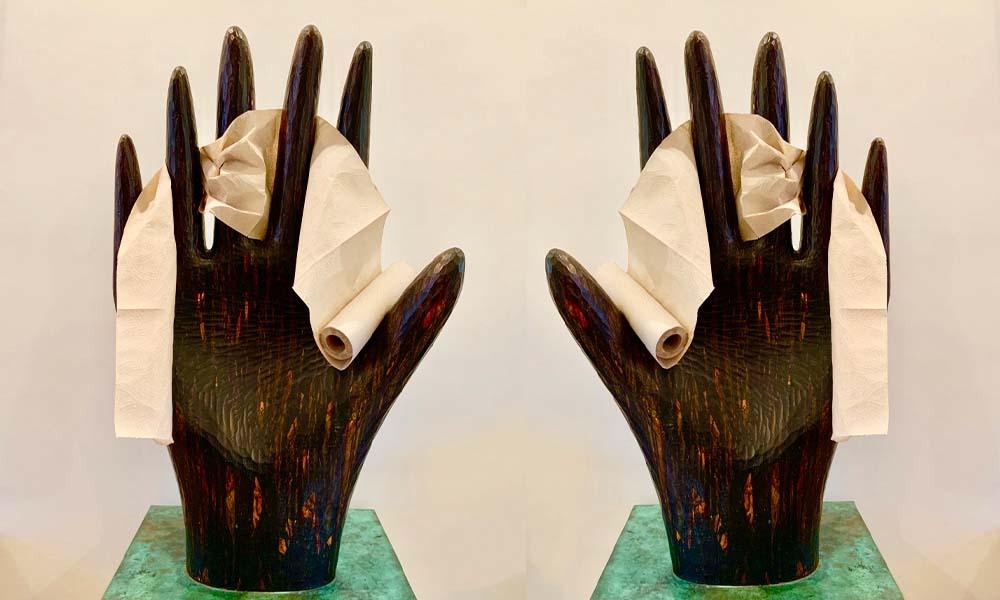FREE 🇺🇸 GROUND SHIPPING Orders 75+
FREE 🇺🇸 GROUND SHIPPING Orders 75+
Add description, images, menus and links to your mega menu
A column with no settings can be used as a spacer
Link to your collections, sales and even external links
Add up to five columns
Add description, images, menus and links to your mega menu
A column with no settings can be used as a spacer
Link to your collections, sales and even external links
Add up to five columns
Confessions From A Paper Towel Addict.
November 22, 2019

Ten years ago, I started to green up my usage. I switched from the well-advertised, totally chlorinated, quilted paper towels to 100% recycled, unbleached ‘brown’ paper towels (made in USA). It was easy. No one in my family suffered or even noticed. Except maybe my husband, who had to return the “wrong” towels. A mistake you don’t make twice.
Switching from white to brown becomes an easy choice when you consider the impact bleached products have on our air, water and soil. CalRecycle1 published an article explaining why chlorinated products like white paper towels should give you pause, “Chlorine and its derivatives (such as chlorine dioxide)—the most common bleaching agents used by the pulp and paper industry—are quite harmful to the environment, particularly the aquatic environment.” A simple web search will provide you with hours of deep and fun reading on this topic.
But this is only part of the story. According to Wikipedia2, paper products make up 26% of landfill waste. In fact, the paper/pulp industry itself is the 5th largest consumer of energy worldwide. What’s more shocking, is that this industry consumes more water to produce a ton of product than any other industry. Makes you rethink how much you love paper towels, plates, coffee cups...
So, while I had become darker green on the eco spectrum, I had a long way to go. No longer could I arm myself with paper towels when I cleaned. I began using rags (old t-shirts and sheets) to clean with. Anything that could swipe the outside of the toilet bowl and then be thrown out. But this didn’t work in the kitchen—too much cleaning. For me, unPaper towels became my go to. It’s common for me to use 3 to 4 in one day, cleaning spills, wiping down appliances, and other clean-ups where I don’t want to use my dish sponges. Easy, right? For other cleaning chores like windows, mirrors and dusting, I use these fiber cloths—they’re made in Maine using and they get better with every wash. If you hate the thought of more laundry, you could try reusable paper towels—these are like paper towels on steroids. Each towel can be used, rinsed, and reused for about a week.
The key to success is hiding the paper towel roll (Aunt Mary hides 'em too). When the roll is on the counter, everyone (including me) dives in because old habits are hard to break. Now, the roll stays out of sight. Need a napkin? Use the cloth napkins. Need to clean up a spill? Grab a dish towel. Sniffles? Geesh don’t use a paper towel! Use a facial tissue (recycled, unbleached of course). I’m pleased to say this strategy works.
The truth is I’m not perfect (don’t tell my husband). I must have REAL paper towels around for emergencies. Crises like cat vomit and cat sneezes demand them. My dog recently demonstrated another good reason to have real paper towels on hand, but that’s too gross to share. Here’s the deal: accidents like these are the raison d’etre for paper towels. I’m sorry. I need them when life gets gross.
The moral of the story is that no one is 100% green and it doesn’t happen overnight, but if we all do a little something, we all benefit. Just by reducing how many paper towels you use is a great first step to greener living.
If you have ideas or products that would help us reduce our dependence on disposable paper products, please share. In the meantime, check our line of wheat straw paper plates, unbleached, of course.
My thanks to:
Cal Recycle
https://www.calrecycle.ca.gov/paper/chlorinefree
Wikipedia
https://en.wikipedia.org/wiki/Environmental_impact_of_paper
Leave a comment

Good News
If any email is worthy of your inbox, it's this. Our goal is 1–2x per month. You'll get helpful & inspiring eco info, plus subscriber-only discounts.
Welcome to What's Good
Here's your $10 coupon
COPY THIS CODE TO USE IN CHECKOUT
